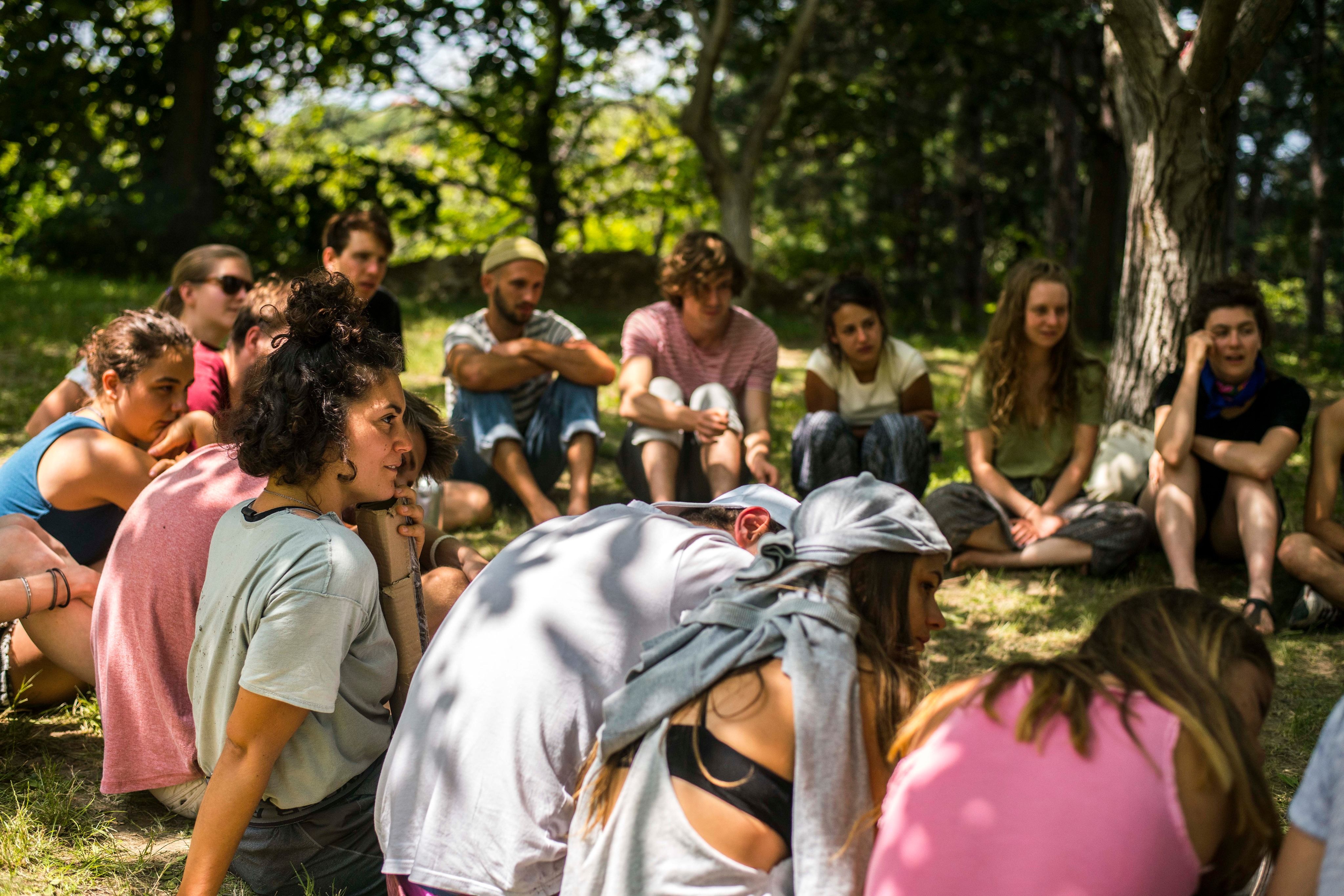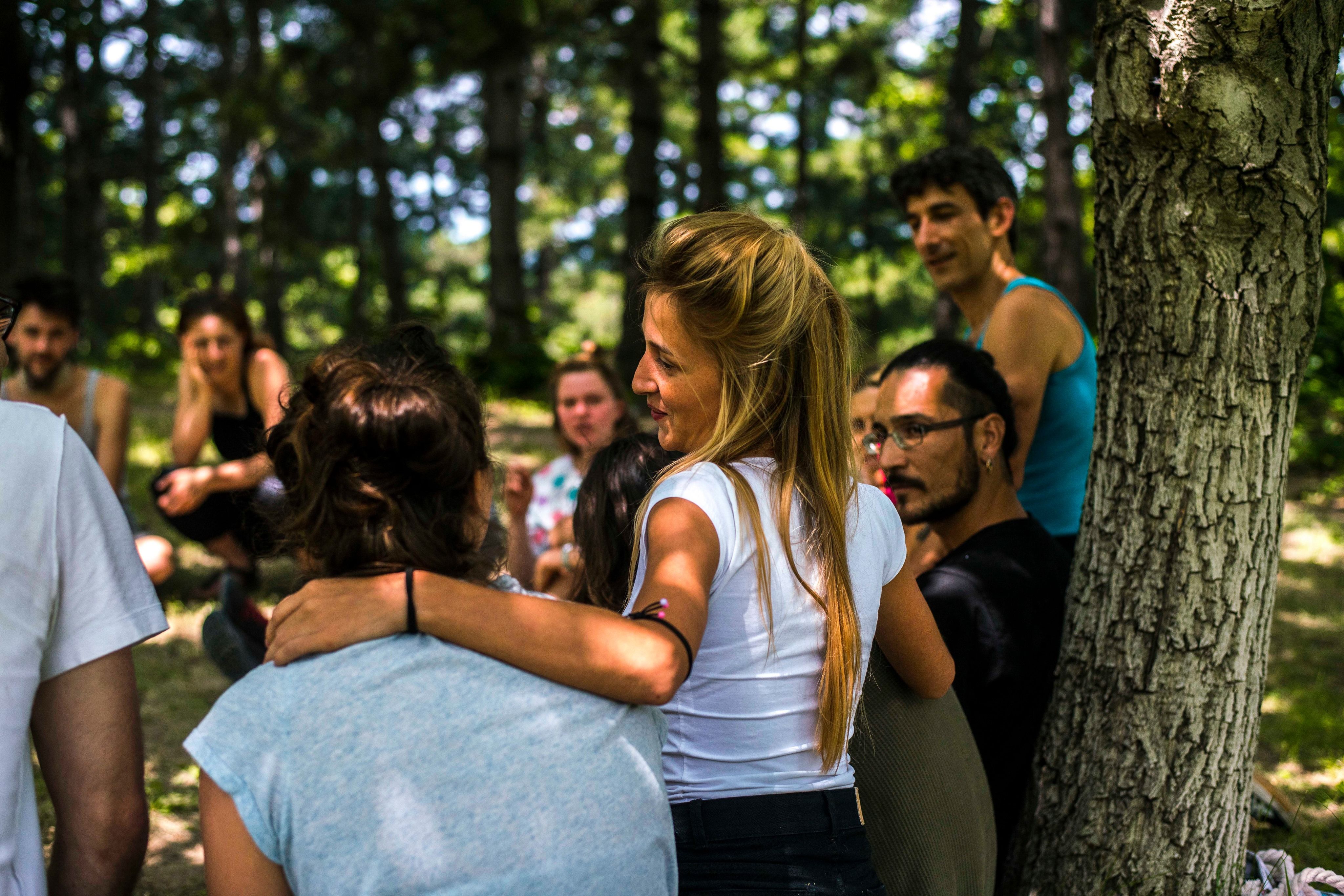A ‘compass’ for the programme details
In the ConneXt project, Compagnie Digestif invites 45 people with an affinity for art from Serbia and Switzerland to exchange information and stories about their own artistic and cultural backgrounds in creative ways and thus contribute to a greater understanding between people and regions. In addition, the aim is to establish a strong network of relationships, which will continue to exist after ConneXt and create a basis for further Swiss-Serbian cultural encounters.

Together with its partner organisation Panonika from Serbia, Compagnie Digestif has worked out a general programme framework. Participants can comment on this proposal in an online forum before the youth exchange starts. In addition, they can already register for what are referred to as skill-sharing sessions, in which they share their skills with the other participants in a workshop. They also answer questions in advance on, for example, where they currently stand, why they are participating in ConneXt and how ConneXt can help them to develop further. Furthermore, they can also ask questions about the topics of the youth exchange. These questions prepare the ground for the learning process. Active involvement from the very beginning of the project enhances the learning experience. This is why it is important in youth exchanges to involve participants in all phases of the project.
The main elements for facilitating exchange on stage art and specific, individual national culture are skill sharing, team-building activities and discussion groups. While skill sharing is about the technical skills of stagecraft, the team-building activities focus on the people and co-operation. The discussion groups form the syntheses from the skill-sharing and team-building activities. Cultural and artistic similarities and differences are addressed here. Specific questions are attended to in small groups, such as: “What does “home” mean to me?” and “What value does “tradition” have for me?”.
The team-building activities are developed by drama teachers. They consist of a great deal of improvisational theatre and spontaneity, also focussing on the participants' own stories and their getting to know each other as individuals. The team-building activities are key in ConneXt. They help to ensure that professional and non-professional artists alike feel at home, that nobody feels out of place and that the participants do not start dividing up into cliques. An example of an activity is a 20-minute walk you take with someone you choose yourself but is someone you don’t know. During the course of a walk, you get to know each other better personally and sometimes you will even make some surprising discoveries.
The daily “Evening Reflections and Safe Groups” are a further important element of ConneXt. This part of the programme, where everyone is sitting together, offers a space safe in which to communicate. The participants are also allowed to make critical comments. It is important that the other participants are not allowed to comment on what has been said. A person has what is referred to as a “talking stick” for as long as they want to speak or use it to ensure a moment of silence. The “Evening Reflections and Safe Groups” hone perception and mindfulness in the group, but also relate to the questions they answered in advance.

What are referred to as “recreative islands” also form an important part of the programme. They take place after breakfast, before and after lunch, and after dinner, and offer a free space in which informal learning can also take place. The participants are then free to organise their time. For example, they can sit around a campfire, play the guitar with each other, or just sit together and have the opportunity to get to know each other in a different way. They can be compared to breaks at school that give students the opportunity to let what they have learned “sink in”.
An interesting method of the youth exchange is what is called the DAS Theatre Feedback Method, which spans an arc between art and culture and was developed by the Amsterdam University of the Arts. It offers a pragmatic approach to opening up intercultural and multi-disciplinary contexts as it does not assume an “objective truth” and allows criticism to be expressed in a constructive way. By taking this approach, obstacles become opportunities, conflicts become enrichment and judgements become opinions that can be discussed.
Compagnie Digestif talks of a “clear compass”, a clear framework they have for the programme. Nevertheless, they want to make it possible for participants to help shape the programme within this framework. They want to keep a good balance between the framework and the opportunities for participation so that the participants feel safe and accompanied on the one hand, but also have the opportunity to adapt the programme to their learning needs. The organisation team discusses the dynamics of the group and the current status of the learning objectives during the course of the day, but especially in the evening, and then decides on any necessary adjustments to the programme. This is because the programme is not intended to be something that has to be worked through come what may, but should show the participants that they are there because they want to be there and are thus participating in the learning process on a voluntary basis. At the end of the programme, the participants then fill in a questionnaire on the learning objectives. This questionnaire shows ConneXt to what extent the participants have achieved the learning objectives. It offers the participants the opportunity to retrace what they have learned and what was useful for them.
Movetia supported the ConneXt project as a vehicle for youth encounter as part of Youth in Action.
Link to a good practice example: “From creative mandala to statistical questionnaire” for the evaluation and recognition of learning outcomes